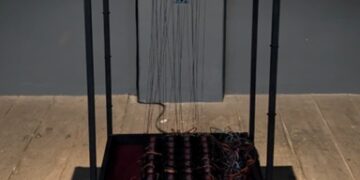The world has rapidly evolved, yet our education system remains largely embryonic
and outdated, still rooted in antediluvian frameworks conceived decades ago.
Today’s dynamic world demands a system that not only educates but also inspires.
An effective education system must equip students with the knowledge and skills
they truly need, blending theoretical, practical, and vocational learning into a
coherent and adaptable curriculum.
Currently, education is designed as a one-size-fits-all model, disregarding the
individual aspirations, interests, and capabilities of students. But every student is
different. They possess unique talents and dreams that cannot be fulfilled through a
common route. A reformed system should empower learners to pursue their own
paths, guided by curiosity, creativity, and relevance to the real world. Teachers must
play a vital role in nurturing this diversity, responding to the specific needs of
learners, and fostering meaningful, purpose-driven education.
A revived and future-oriented education model can bring significant shifts in the
global economic landscape. In an increasingly competitive job market, the traditional
education system is no longer sufficient. Tomorrow’s students will not accept
obsolete teaching methods. We must nurture a generation that is not just literate, but
also innovative, motivated, and leadership-ready.
Classroom teaching alone cannot instill real-world skills. Experience cannot be
taught; it must be lived. Therefore, education must include exposure to real-life
environments—industries, workshops, startups, and service sectors—to offer
students a feel of practical work. Life skills such as teamwork, problem-solving,
adaptability, and communication must be taught explicitly and integrated into
academic subjects and vocational training.
The curriculum should include career guidance, workplace visits, and mentorship
opportunities. Listening to people who have built successful careers in diverse
sectors can help students visualize their future more clearly. Parents, too, must
engage actively in understanding and supporting their children’s interests, strengths,
and goals.
A three-tiered model of learning should be adopted:
- Academic/Theoretical learning
- Practical/Vocational training
- Blended learning (theory + practice)
Students should be given the freedom to choose the model that best suits their
interests and aspirations. Those opting for vocational or hands-on training should
have access to specialist facilities, trained professionals, and real-world mentoring.
This not only prepares them for specific careers but also gives them the flexibility to
change fields through recognized and employer-approved training pathways.
Apprenticeships and internships should be a mandatory component of the practical
curriculum.
Furthermore, vocational courses must reflect the current demands of modern
workplaces. Employers should collaborate with educational institutions to design and
monitor these programs, ensuring their relevance and effectiveness. Allocated time,
structured support, and expert guidance are essential to make this transition
successful.
Transforming education is a gradual but vital process. It requires a fundamental shift
in approach and a commitment to quality, equity, and relevance. Students should
have access to digital platforms that provide career insights, training pathways, and
forums to engage with professionals. The emphasis should be on employability, with
institutions fostering learning around core competencies and human values.
Developing new qualifications—such as diplomas, apprenticeships, and vocational
certifications—must be a national priority. Institutions need to invest in qualified
educators, industry experts, and infrastructure to deliver impactful education.
Degrees and programs must be designed in partnership with employers and should
emphasize value-based, hands-on learning.
Ultimately, real reform requires a collective change in attitude—from parents,
educators, entrepreneurs, and policymakers. With their combined support, we can
build an education system that truly prepares students not just for exams, but for life
and leadership.
The author can be reached at sajad_08phd12@nitsri.ac.in






